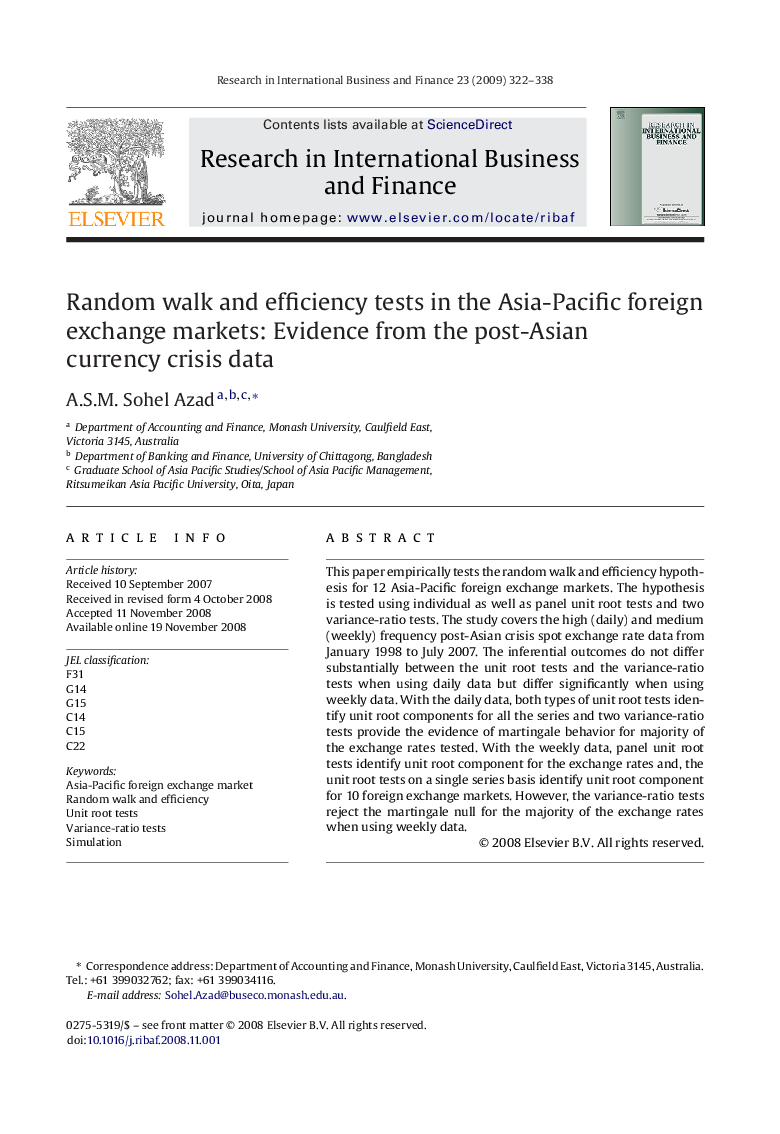| Article ID | Journal | Published Year | Pages | File Type |
|---|---|---|---|---|
| 1003217 | Research in International Business and Finance | 2009 | 17 Pages |
This paper empirically tests the random walk and efficiency hypothesis for 12 Asia-Pacific foreign exchange markets. The hypothesis is tested using individual as well as panel unit root tests and two variance-ratio tests. The study covers the high (daily) and medium (weekly) frequency post-Asian crisis spot exchange rate data from January 1998 to July 2007. The inferential outcomes do not differ substantially between the unit root tests and the variance-ratio tests when using daily data but differ significantly when using weekly data. With the daily data, both types of unit root tests identify unit root components for all the series and two variance-ratio tests provide the evidence of martingale behavior for majority of the exchange rates tested. With the weekly data, panel unit root tests identify unit root component for the exchange rates and, the unit root tests on a single series basis identify unit root component for 10 foreign exchange markets. However, the variance-ratio tests reject the martingale null for the majority of the exchange rates when using weekly data.
